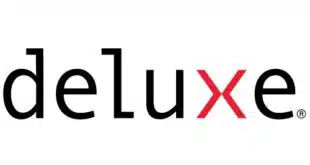The Zelle peer-to-peer payments network is starting to click for the smaller, everyday transfers it was designed to handle.
Early Warning Services LLC, the Scottsdale, Ariz.-based banking-technology company that runs the 2-year-old network, reported on Tuesday that Zelle handled $44 billion in volume in the second quarter on 171 million transactions. Those numbers are up 56% and 71%, respectively, compared to the same period in 2018.
But what the numbers also say, according to Zelle’s managers, is that people are using the bank-owned service less to pay the monthly rent and more to pay the babysitter or reimburse friends for dinner. The system’s average payment works out $257 for the quarter, down 9% from $282 a year earlier. For Early Warning and its banking clients, that means the service is fulfilling its purpose.
“It’s the adoption of P2P across generations, trust in using a service included in mobile-banking apps, and the utility of P2P in everyday life that we can attribute to the popularity and success of Zelle,” said Lou Anne Alexander, group president, payments solutions at Early Warning, in a statement.

Zelle has also attracted more banks. Some 480 have now contracted to offer Zelle, of which 179 are processing transactions, Early Warning said. This includes many of the nation’s biggest banks but also smaller financial institutions, including credit unions. When all of the 480 institutions are running transactions, Zelle will account for 64% of the country’s demand-deposit accounts, according to Al Ko, the former long-time Intuit Inc. executive who took over in May as Early Warning’s chief executive, succeeding long-time boss Paul Finch upon Finch’s retirement.
Zelle could extend its reach into consumers’ P2P payment habits even further as more financial institutions adopt its mobile app, observers say. “Zelle has an advantage once it gets integrated into more mobile-banking apps. That’s because consumers still trust their banks with their money and will feel comfortable transacting with their bank,” notes Patricia Hewitt, principal at Savannah, Ga.-based PG Research & Advisory Services.
And as Zelle further establishes itself as a real-time substitute for small cash transactions among friends, experts say, its results should keep trending up.
“The latest numbers released by Early Warning for Zelle represent a really good trajectory that we expected from a well-received product that is still in its early growth stage,” says Sarah Grotta, an analyst at Mercator Advisory Group, Maynard, Mass. “I predict that they will see similar continued growth in the remaining quarters of the year, with perhaps a little more growth during the fourth quarter during the holidays as gift-giving is a top use case for P2P transactions.”
One caution flag for the young network, say some observers, is its rivalry with PayPal Holdings Inc. and its hugely popular Venmo P2P service . PayPal in April revealed for the first time that Venmo has more than 40 million users (Zelle does not release a user count) who rang up $21 billion in volume in the first quarter. But that volume was only half of PayPal’s total P2P value total, which includes the company’s traditional payment service between users.
Other rivals are also on the horizon. “PayPal remains a real mobile brand and we haven’t even considered Square Cash in this, which is also doing quite well,” notes Hewitt.





